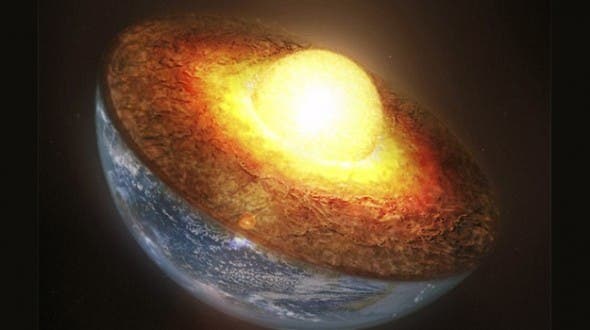
Physicists at the Australian National University (ANU) have made a groundbreaking find: Earth’s inner core is made of two distinct layers.
“We found evidence that may indicate a change in the structure of iron, which suggests perhaps two separate cooling events in Earth’s history,” Joanne Stephenson, lead author of the new study, said in a statement.
When Earth formed more than 4.5 billion years ago, it was still a planet-sized blob of molten rock. But once the planet cooled down, it started to first form the outer crust, then the mantle, the outer core, and the inner core.
The inner core is actually solid despite it’s hotter than the sun’s surface thanks to the atomic diffusion of iron at high pressure. Meanwhile, the outer core is liquid, made of molten iron in constant churning movement, driven by convection as the outer core loses heat to the static mantle. This process is what generates the planetary magnetic field akin to a dynamo.
We know so many intimate details about Earth’s distinct layers — even though they’re obscured by 6,353 kilometers of rock — by inferring their properties from acoustic waves passing through. When an acoustic wave generated by a volcanic eruption or earthquake is propagated below the surface, its properties such as direction, angle, and velocity change as a function of the material it encounters.
Thanks to such investigations, scientists have long known that Earth’s solid inner core is nearly the size of the moon and is mostly made of crystallized iron — but that’s not all.
New findings set to rewrite textbooks suggest that there’s an innermost layer in the inner core. The researchers speak of evidence pointing to a change in the structure of iron at a depth of around 5,800 kilometers.
“The idea of another distinct layer was proposed a couple of decades ago, but the data has been very unclear,” Stephenson said.
“We got around this by using a very clever search algorithm to trawl through thousands of the models of the inner core.”
If confirmed, it means that the two layers must have been created by two separate major cooling events in the planet’s history. The precise details, however, are still a mystery.
Previously, researchers suspected that there may be more to Earth’s inner core than meets the eye due to experiments showing inconsistencies in our planetary model. Some believe that the first-generation iron crystals in the innermost core may have different structural alignments.
The findings appeared in the Journal of Geophysical Research.









